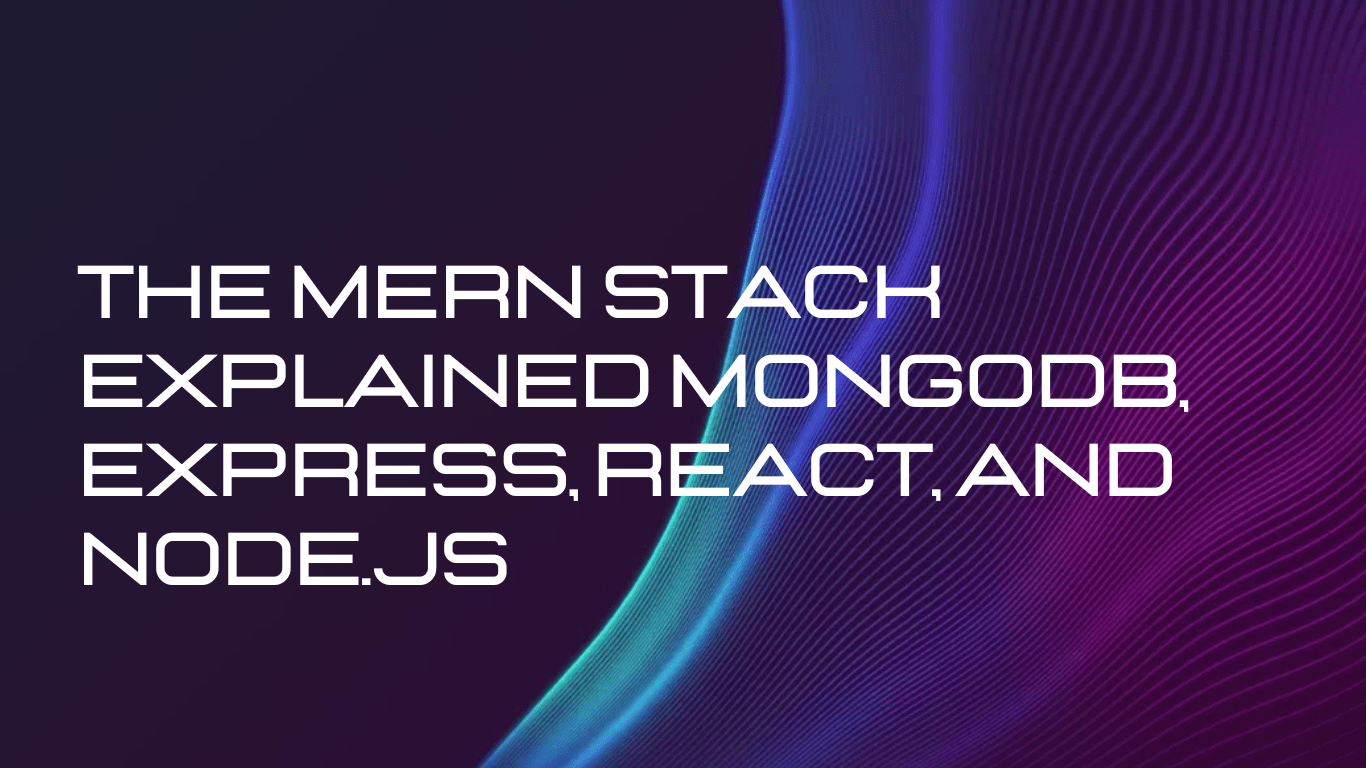The MERN Stack Explained: MongoDB, Express, React, and Node.js

The MERN Stack is a popular JavaScript stack for building modern web applications. It combines four powerful technologies: MongoDB, Express, React, and Node.js. Each plays a specific role in the stack, creating a robust full-stack development environment.
1. MongoDB (Database Layer)
- What it is: A NoSQL database that stores data in flexible, JSON-like documents.
- Role in the stack: Acts as the database for the application, handling data storage and retrieval. MongoDB is schema-less, making it highly adaptable to applications with changing data structures.
- Advantages:
- High scalability.
- Stores data in a natural, JSON-like format, making integration with JavaScript seamless.
- Powerful query language and indexing capabilities.
2. Express (Backend Framework)
- What it is: A minimalist web application framework for Node.js.
- Role in the stack: Handles the server-side logic, such as routing and API development.
- Advantages:
- Lightweight and unopinionated, allowing developers to structure applications as they see fit.
- Simplifies the process of handling HTTP requests, responses, and middleware.
- Works seamlessly with Node.js.
3. React (Frontend Library)
- What it is: A JavaScript library for building user interfaces, particularly single-page applications (SPAs).
- Role in the stack: Provides the client-side (frontend) interface, enabling dynamic and responsive user experiences.
- Advantages:
- Component-based architecture for reusable and maintainable code.
- Virtual DOM for fast and efficient UI updates.
- Strong community support and an extensive ecosystem.
4. Node.js (Runtime Environment)
- What it is: A JavaScript runtime built on Chrome’s V8 engine.
- Role in the stack: Executes server-side JavaScript, enabling developers to use JavaScript for both frontend and backend development.
- Advantages:
- Non-blocking, event-driven architecture for high scalability.
- Unified language across the stack.
- Rich ecosystem of libraries via npm (Node Package Manager).
How the MERN Stack Works Together
- Frontend (React): Users interact with the React-based UI. React communicates with the backend using API calls.
- Backend (Express & Node.js): The Express server (running on Node.js) handles incoming requests and communicates with the database.
- Database (MongoDB): The database stores and retrieves application data, sending responses back to the Express server.
- Data Flow: React ↔ Express ↔ MongoDB.
Advantages of MERN Stack
- Full-stack development using a single programming language: JavaScript.
- High flexibility and scalability for web applications.
- Open-source tools with strong community support.
- Ideal for building SPAs, dynamic websites, and cloud-based applications.
Common Use Cases
- Social media platforms.
- E-commerce websites.
- Real-time applications like chat apps.
- Content management systems (CMS).
By leveraging the MERN stack, developers can build end-to-end web applications with ease, utilizing JavaScript throughout the development process.